An extremely rare certificate from the days of the First Temple was returned to the State of Israel in an intelligence operation
There are only three papyri from this period in the Israeli state treasures • The certificate was returned thanks to the cooperation of the Robbery Prevention Unit at the Antiquities Authority, Prof. Shmuel Ahitov, winner of the Israel Bible Prize, the Ministry of Culture and Sports, and the Ministry of Jerusalem and Heritage • To be published for the first time to the general public at the 1st Judean Desert conference, which will be held Next Thursday at the Biblical Lands Museum in Jerusalem
In an intelligence effort, the Antiquities Authority's Robbery Prevention Unit, in cooperation with Prof. Shmuel Ahitov, winner of the Israel Prize for the Bible, and with the assistance of the Ministry of Culture and Sports and the Ministry of Jerusalem and Heritage, succeeded in returning to the possession of the State of Israel a document written on papyrus from the time of the First Temple. The artifact which is written in ancient Hebrew script (Paleo-Hebrew) thought to had originally been taken from one of the caves of the Judean desert.

|
| Papyrus Ishmael. Photo by Shai Halevi, Antiquities Authority |
The rare certificate which was not known before includes four broken lines, beginning with the words "Lishmael Teshel[h]..." (Sen[d] to Ishmael). According to the text, it seems to be a letter with instructions for the addressee. It has been proposed to date the document back to the 6th-7th centuries BCE, and thus, the certificate joins only two certificates in the possession of the State of Israel from this period. The origin of all three is in the Judean desert, characterized by a dry climate, which allowed the preservation of the papyrus.
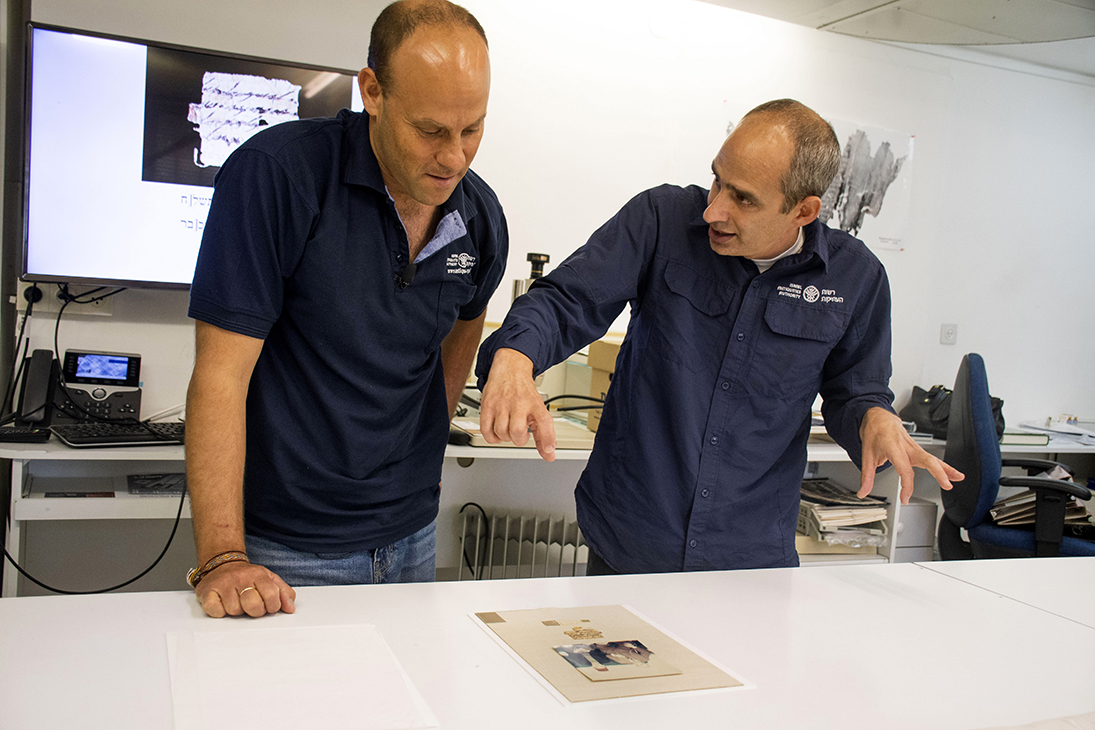
|
| Dr. Go Uziel and Dr. Eitan Klein examine the rare find. Photo by Yuli Schwartz, Antiquities Authority |
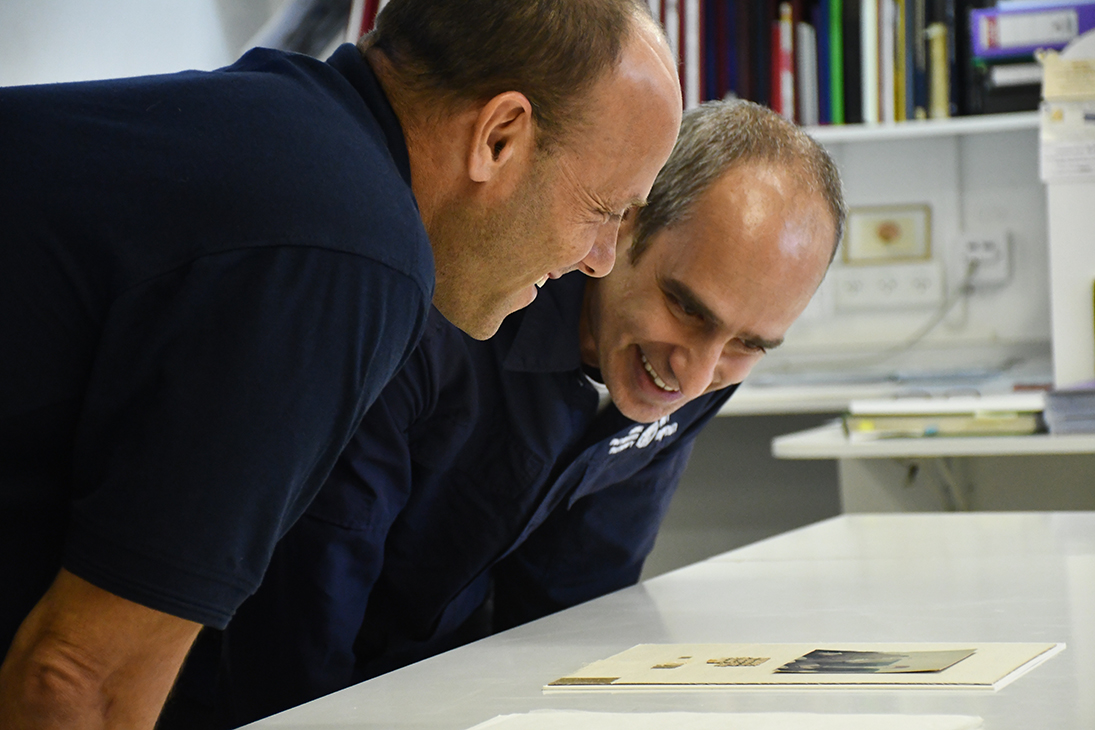
|
| Dr. Go Uziel and Dr. Eitan Klein examine the rare find. Photo by Yuli Schwartz, Antiquities Authority |
The affair began with the passing away of the late Hebrew script researcher Dr. Ada Yardani in June 2018. A manuscript on which she worked and did not have time to complete was handed over to Prof. Shmuel Ahitov, in order to promote its publication. When Ahitov examined the manuscript, he was surprised to discover that it contained a photograph and a preliminary decipherment of a rare unknown certificate from the days of the First Temple.
Prof. Ahitov and the Antiquities Authority's anti-robbery preventive section joined forces to go out and track down the item's owner and its whereabouts and they succeeded in tracking him down in Montana, USA. The owner had said that the papyrus was given to his mother in 1965 during her visit to the Land of Israel by Yusef Sa'ad, who was the curator of the Rockefeller Museum in Jerusalem, and Halil Iskander Kando, a well-known antiques dealer from Bethlehem, who previously sold thousands of pieces of scrolls from the Judean Desert. When the tourist returned from her visit to Israel to the US the item was placed in a glass frame.
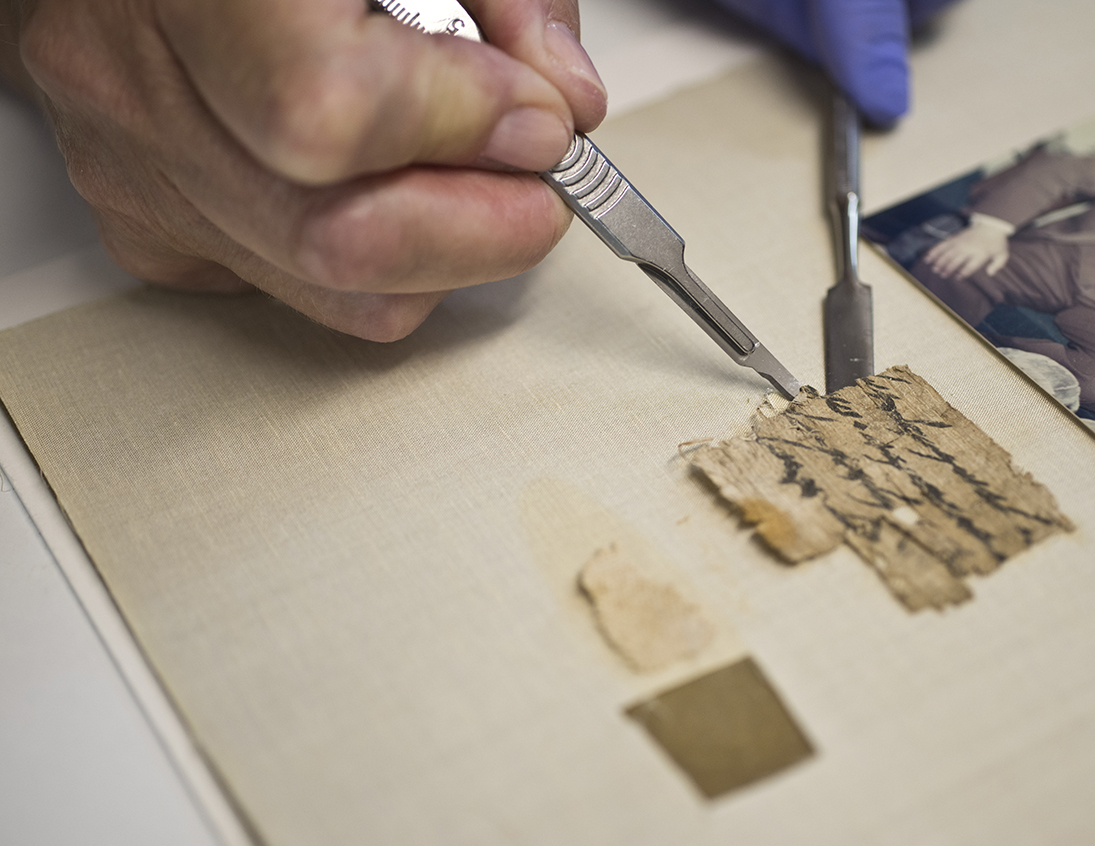
|
| The papyrus is treated in the Scrolls Laboratory of the Antiquities Authority. Photo by Yuli Schwartz, Antiquities Authority |
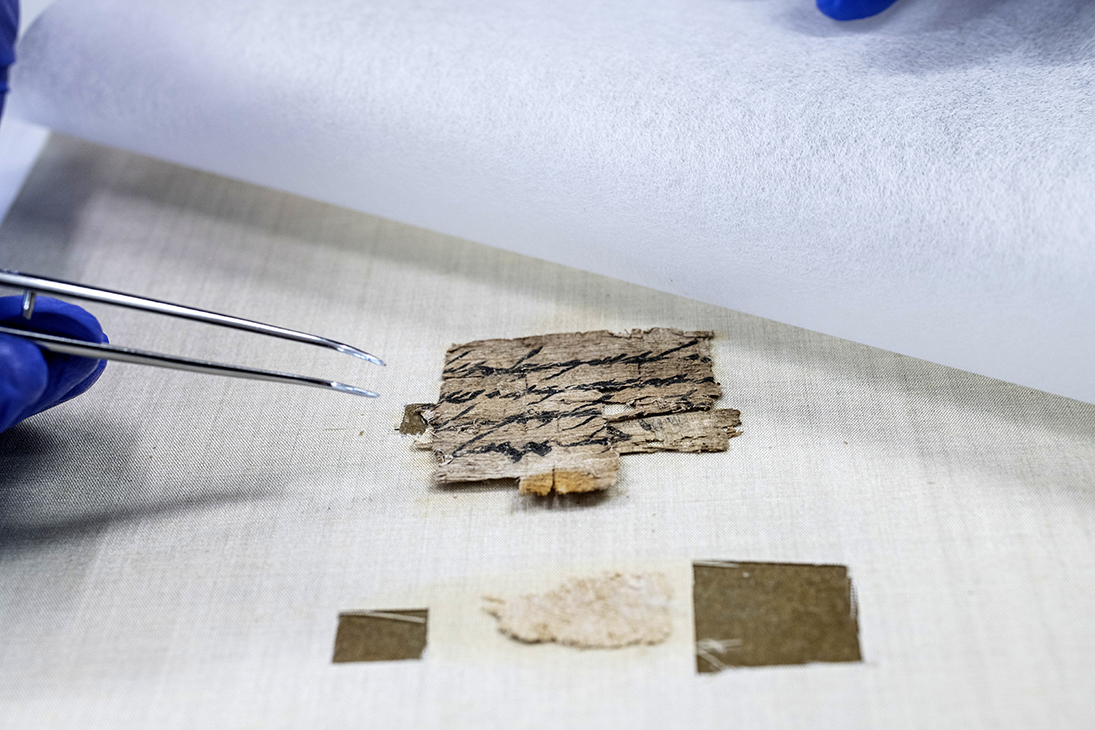
|
| The papyrus is treated in the Scrolls Laboratory of the Antiquities Authority. Photo by Yuli Schwartz, Antiquities Authority |
The owner of the certificate was invited to visit the conservation lab of the Judean Desert Scrolls Unit of the Jerusalem Antiquities Authority in order to persuade him to turn it over to Israel so that it would return to the native country and be preserved under the appropriate conditions for such a delicate find. Following this visit he handed the rare document over to the IAA since he was certain that this was the best location for its preservation and study.
The certificate was preserved and recorded by the IAA Scrolls Unit with it's innovative multi-spectral system, used to document and monitor the condition of the scrolls. In order to test it's reliability a sample of was sent for radiometric dating at the Weizmann Institute. The results corresponded to the paleographic determination (according to the type of writing), thereby strengthening the argument that it is indeed a certificate from the late days of the First Temple era. It has been scientifically researched by Prof. Ahitov, and his findings will be presented next Thursday at the "First Judah Desert" conference of the IAA which will be held at the Biblical Lands Museum in Jerusalem.
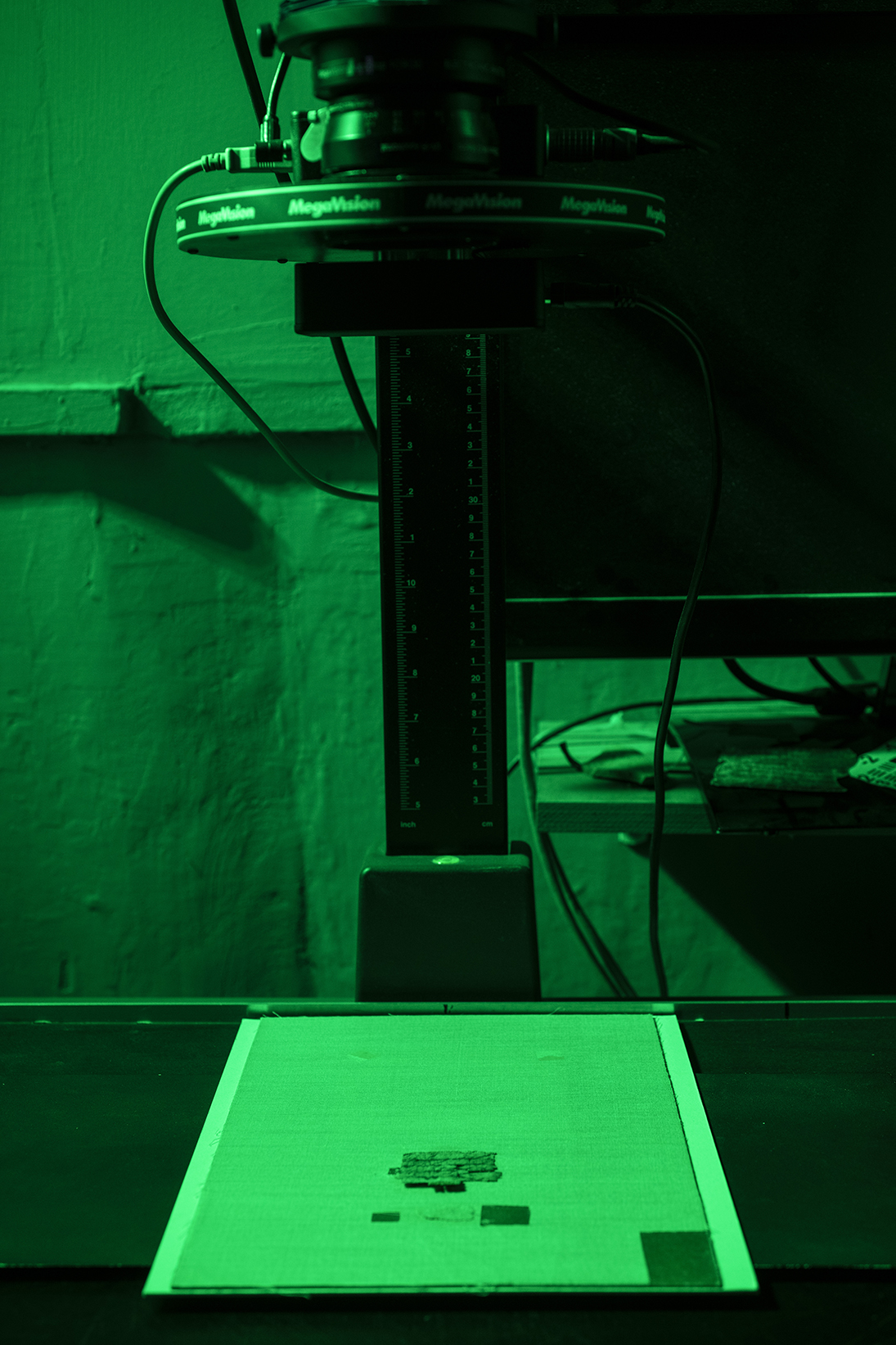
|
| The papyrus is photographed at different wavelengths in the laboratories of the Jerusalem Antiquities Authority. Photo by Shai Halevi, Antiquities Authority |
According to Prof. Shmuel Ahitov, "The name Ishmael, which is mentioned in the certificate, was a common name in the biblical period, meaning "God will hear". The name first appears in the Bible as the name of the son of Abraham and Hagar, and later was mentioned as the first name of various people in the Bible, including Ishmael Ben Netanyahu, who murdered Gedaliah ben Ahikam. The name appears in the paleographic findings from the days of the First Temple, among other things, as the name of officials in the administration of the Kingdom of Judah, on stamps (seal impressions on pieces of material) that signed state documents, such as the "Lishmael ben Hamelech" stamp. It seems that this certificate was used as confirmation of shipment from or to Ishmael."
"At the end of the First Temple, literacy was a common thing," said Dr. Joe Uziel, director of the Judean Desert Scrolls Unit at the IAA "and seal impressions discovered in various urban centers - including Jerusalem, the capital of the kingdom. However, certificates made of organic materials - such as papyri - were almost never preserved. To show how rare it is - from the time of the Second Temple, we have thousands of fragments of scrolls, but from the days of the First Temple - there are only three certificates, including the last one which was found and recovered. Each certificate sheds additional light on the literacy and administration of the days of the First Temple."
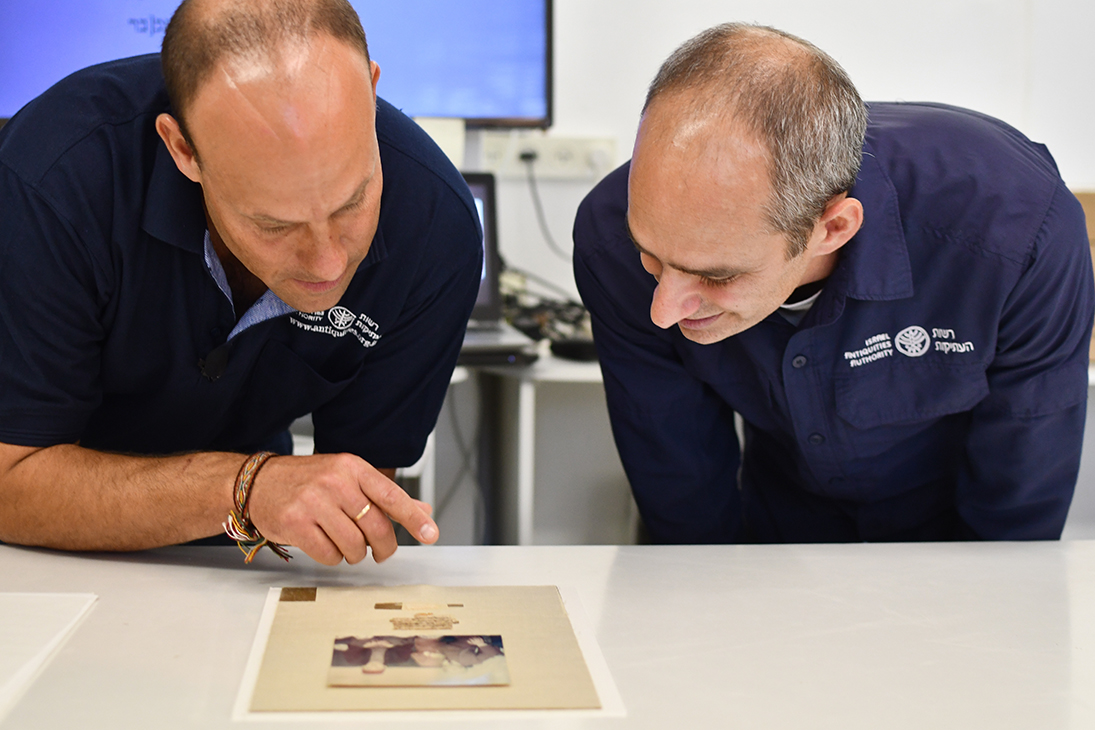
|
|
| Dr. Go Uziel and Dr. Eitan Klein examine the rare find. Photo by Yuli Schwartz, Antiquities Authority |
According to Dr. Eitan Klein, Deputy Director of the IAA's Robbery Prevention Unit, "The return of this certificate to the State of Israel is part of the ongoing effort undertaken by the Robbery Prevention Unit to protect and preserve the cultural heritage assets of the State of Israel, which belong to all citizens of the country, and tell the story of the historical heritage of the Land of Israel and its inhabitants throughout the ages. The legal and proper place of this item is in the Judean Desert Scrolls Unit of the Antiquities Authority, and we are making every effort to get our hands on additional pieces of scrolls found abroad and return them to the State of Israel."

|
| The Antiquities Authority is currently conducting an archaeological survey in search of additional finds of importance in the Judean Desert. Photo - Eitan Klein, Antiquities Authority |
According to Minister of Culture and Sports Hili Troper: "The Antiquities Authority, in cooperation with the Ministry of Culture and Sports, and the Ministry of Jerusalem and Heritage, leads impressive antiquities discovery operations, and surprises time and time again with its successes in locating lost treasures of the past. The Antiquities Authority's Robbery Prevention Unit works vigorously to eradicate the phenomenon of antiquities theft This, so that we can all be impressed by the national assets of the country, learn, and deepen our roots."
According to the Minister of Construction and Housing, Jerusalem and Heritage, Ze'ev Elkin: "The important discovery joins the series of archaeological discoveries and many findings found in the Judean Desert region in recent years, such as the scrolls from the Judean Desert. We at the Jerusalem and Heritage Ministry budget millions of shekels for the antiquities robbery unit. Since I took office a year and a half ago, we have invested about 4 million shekels in the robbery unit and, together with the Antiquities Authority, initiated the survey of the caves in the Judean desert. We established an inter-ministerial committee to deal with the destruction of heritage sites in Judah and Samaria and we work at all times to develop, preserve and save heritage sites all over the country with hundreds of millions of shekels. We will continue to strengthen and connect the public to the stories of the national heritage of the people of Israel that are revealed in the desert caves, in the rocks of the Golan and in every corner of the country."

|
| The papyrus is photographed at different wavelengths in the laboratories of the Jerusalem Antiquities Authority. Photo by Shai Halevi, Antiquities Authority |
According to Eli Escozido, Director of the Antiquities Authority, "The return of the rare certificate to Israel is part of an overall move led by the Antiquities Authority, which is intended on the one hand - to prevent the trade in scrolls that were looted in the past from the Judean Desert, and on the other hand - to stop the robbery of heritage properties in the desert today. As part of this effort, the Israel Antiquities Authority initiated Antiquities the Judean Desert Caves Survey, which restored Israeli rule in the region, and deploys an enforcement and research umbrella over the cultural heritage items found in the Judean Desert caves."


